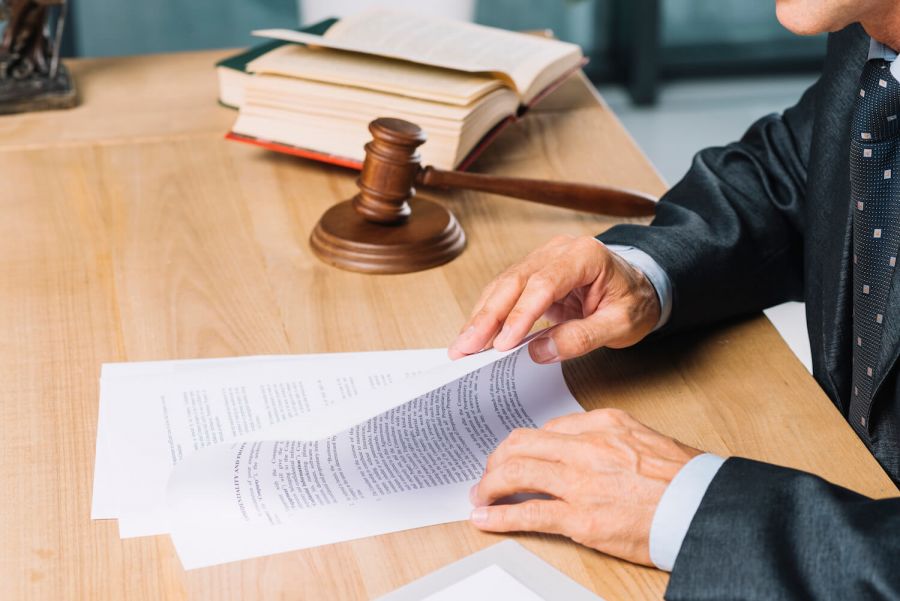If you are accused of a crime, all hope is not lost; you have a couple of pre-trial choices, one of which is the PR bond. When a judge grants a PR bond, also known as a Personal Recognizance Bond, the defendant is released without any deposit or security. Even when their release terms have been lifted, defendants must still commit to appear in court.
To a large extent, these bonds are extremely uncommon, and if they are given, the release will be on their own recognizance.
At first glance, however, a PR Bond always seems like the best option, but when this thought flashes through your mind, I’d like you to take a breather and think again. This is because, obtaining a PR Bond may cause you to miss your court date, and it often comes with unexpected conditions. In the course of this post, we will look at these unexpected PR Bond conditions and what this means for residents in states like Texas, Michigan, Colorado, and so on.
What is a PR Bond?
A court judge will give a Personal Recognizance Bond, often known as a “PR Bond,” after reviewing an individual’s case and criminal background during a pre-trial hearing.
The benefit of obtaining a PR Bond is that, while a judge sets the bail amount, the bonded party is not forced to pay anything and must appear in court at all times. Keep in mind that if the person fails to keep their end of the personal recognizance bond (by missing court dates or fleeing town), they will be required to pay the full bail amount and may be arrested again.
What is a PR Bond In Texas?
In the state of Texas, a personal recognizance bond, or PR bond, is the cheapest and best way to get released from custody. The service is available in almost all large to major cities in Texas, although it is not available in the great majority of small and rural areas and counties. To be released from custody, you must post a surety bond, which requires you to put money down and pay for the services of a third party who is bonded and licensed in that area.
In Texas, Travis County has the strongest and most widespread use of PR bonds. Even if a defendant is denied a personal bond after being examined by the Travis County court’s Pretrial Services, a counsel can still approach a judge and ask for a PR bond. While other counties have some form of PR bonds, Travis County has by far the largest number of PR bonds awarded.
Personal Recognizance Bond Benefits
A PR bond allows a defendant to be freed without having to post a bond once information about the defendant is acquired, such as their name, residence, occupation, number of years they’ve lived in the county, and so on. A person is often considered a viable candidate for a PR bond if the court determines that they are not a flight risk and have a minor criminal background.
So, to answer the question, what is a PR bond? It’s a way to save money during the legal process. While a PR bond does not require any money to be paid upfront or posted with the court, the defendant must pay Pretrial Services, a $40 administrative charge or 3% of the bond amount within 7 days of release.
The defendant is personally accountable for the entire bail amount if they fail to appear in court and address their accusations.
If someone who was issued a PR bond fails to appear in court, it’s unlikely that they’ll be given one again, or that a judge will agree to recall a warrant and reinstate the personal bond.
Types of Bonds In Colorado
When a person (the “defendant”) is arrested on suspicion of a crime, the police will book him or her at the station and keep him or her in custody until the matter is heard by a judge.
In the least serious circumstances, the judge may agree to award a PR bail, allowing the offender to be released without having to post any money. All the defendant has to do is sign the bail form and promise to show up for all future court hearings. A “signature bond,” “no-cost bail,” or OR (“own recognizance”) release are all terms used to describe this type of release.
In the most extreme situations, such as homicide or rape, the judge may refuse to issue bail and order the defendant to remain in custody pending the result of the case.
In more serious circumstances, the judge may establish a bond amount if the prisoner is not a flight risk or violent. The Colorado Pretrial Assessment Tool (CPAT) is used to decide whether a defendant should be granted bail. Some of these considerations include whether the defendant:
- Possesses a phone, owns or rents a home, and contributes to housing costs
- Has an alcohol issue now or in the past
- Has received or is receiving mental health treatment
- May have served time in prison
- Or has active arrest warrants
Read Also: Can You Bail Yourself Out of Jail? Process, Amounts & All You Need
But all together, level 1 defendants have the lowest probability of reoffending while out on bail, while Level 4 defendants have the highest risk.
The defendant may be released awaiting the result of the case if the court sets bail and the defendant can pay it — or if a bail bondsman puts up the money. However, if the offender cannot pay the bond sum, he or she will be held in custody until the matter is resolved.
People who are freed on bail may still be subject to numerous conditions. Some examples are:
- electronic surveillance in Colorado
- allowing court officers into the defendant’s house to check in on him/her
- drug testing counseling by calling or visiting the court (such as for domestic violence)
- rehab (such as AA or NA)
- release from pretrial work
How Do You Get PR Bonds?
The judge considers a number of factors when granting a PR bail, including the type of case, whether it was violent or nonviolent, and the defendant’s criminal history. The judges also examine to see if they have a good reputation in the community where they live. If the offender has no criminal past, this is usually granted; in other situations, the defendant may be required to write a one-page statement to the judge explaining the situation. Move for Personal Recognizance Bond or Motion for Bond Reduction could be the title of this motion.
You must request and schedule a date for evidence to be presented for why the defendant needs the PR bond after the motion has been filed. And because receiving a PR bond is extremely rare and not always granted, defendants must be prepared to make a strong case the first time they seek one.
How to Get PR Bonds in Texas
Once a person is arrested, the defendant will be interviewed by the pretrial services division (if the county has one) to acquire personal information. If you are arrested, it is in your best interest to give the pretrial services officer your personal information so that they can determine if you are eligible for a bond. While you have the option to decline the interview, we strongly advise you to do so.
The Magistrate is presented with the defendant’s biographical information, criminal history, and a copy of the officer’s affidavit seeking a warrant of arrest and detention. The magistrate will then set the amount of the PR bond and decide whether or not to approve it.
So, who is eligible for a PR bond? Well as we earlier mentioned, that depends on a number of factors, including (but not limited to):
- Whether the court considers the subject is a flight risk or a threat to the community (ex. employed, a student, community leader, etc.)
- The type of situation: whether aggressive or nonviolent
- Criminal record of the defendant
- Motion for Reduction of Bond or Personal Recognizance Bond
How Long Does It Take to Get a Personal Recognizance Bond?
The time it takes to qualify for a PR bond and be released varies greatly by county, however, Travis County is noted for having the quickest PR bond process in the state. We usually recommend hiring an attorney to help you with your personal recognizance bond since it cuts down on the time it takes to file the papers. Pretrial Services can handle the PR bond process from start to finish in 24 to 36 hours, while an attorney can speed up the process to as little as a few hours in some cases.
3 Things to Know About PR Bonds
The following are 3 major things to keep in mind about the Personal Recognizance bond;
#1. Delay in Being Released From Prison
The process of obtaining a PR Bond takes longer than that of obtaining a bail bond. An interview with a pretrial officer is required of you. You’ll also need to gather personal references that can attest to your community’s stability. This procedure follows the timeline set by the judicial system, not yours.
#2. Judges Are the Only Ones Who May Give PR Bonds
Even if you have a lawyer representing you, a PR Bond can only be obtained with the approval of a court judge. Your parole could be postponed indefinitely depending on the judge’s schedule and the number of other inmates he or she needs to visit. You only need to submit your own consent and signature with the help of a bail bondsman (depending on the type of bail bond you get).
#3. Undisclosed Additional Charges
While you are not required to pay the full bail amount once you have obtained a PR Bond, there may be a number of hidden costs linked with the judge-approved bond’s terms, such as court-ordered classes, that you must pay for on your own dime. Furthermore, if you’re arrested for a minor drug offense, you may be required to enroll in, attend, and pay for a drug misuse class. As part of your PR Bond, you may be required to attend meetings and other classes related to your offense.
Should I Apply for a PR bond?
Obtaining a PR bond has numerous advantages. The first is that you will not be jailed during your court case, allowing you to spend time with friends and family rather than in jail. The ability to forgo a bond deposit is the second major benefit. This does not mean that it is fully free; you may be required to pay additional, unspecified fees, such as visiting a probation officer for a fee or enrolling in a program. And because PR bonds are only issued by a court, you may have to wait an unlimited period of time for the judge to be available to see you, therefore you have no way of knowing when you will be released.
Conclusion
Again, only an attorney can help you with this. If the State refuses to cooperate, the attorney must bring the defendant to court for a hearing before the Judge. If the defendant qualifies and has not yet been indicted, the Judge must award a personal bond.
For a Class A Misdemeanor, incarceration is only required for 30 days without the filing of information (information is the charging document in a misdemeanor case, versus an indictment in a felony case). For a Class B Misdemeanor, incarceration is only required for 15 days without the filing of information. This nearly never happens with a Class C Misdemeanor because they are not penalized by any kind of jail time.
Related Articles
- SLIP AND FALL LAWYER: How To Get The Best Attorney For Your Case
- Can You Get A DUI On A Bike? State Laws On DUI
- HOW TO BUY A HOUSE IN CALIFORNIA In 2022 (Detailed Guide & Tips)
- HOW TO FIND OUT WHERE SOMEONE WORKS the Right Way
- CAN A FELON OWN A GUN? Best US Practices 2022
- Can I Write a Check to Myself? How to Go About it Rightly



